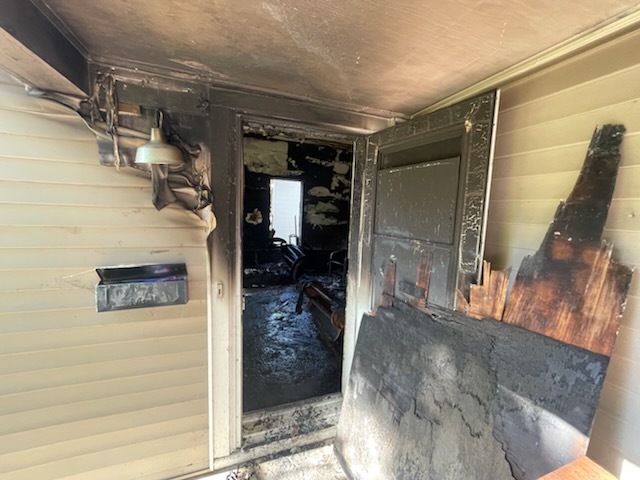According to Fire Cash Buyers, repairing a fire-damaged house is similar to rehabbing a fixer upper but there are a few key points you need to know.
Step 1: Documentation
After a house fire, properly documenting any damage done is the most important initial step to beginning the fire damage restoration process. This involves taking a thorough inventory of what was damaged, destroyed, or otherwise impacted.
This can be done by consulting with experts such as fire safety professionals and building engineers who are familiar with commercial and residential building structures.
Documentation includes photographs, videos, measurements, and more to determine the extent of the damage and develop an effective plan for rebuilding.
This will allow your insurance company to assess the fire’s cause and extent of destruction more accurately, which can help ensure that you receive the desired amount of financial assistance with repairs.
Step 2: Assess The Damage
This means looking at each room to determine what fixtures, furniture, and items can be salvaged or must be thrown out. Additionally, this is an opportunity to detect any underlying structural problems caused by the intense heat of the fire that could be compromised in some way.
If there is smoke residue on walls or other surfaces, then that must also be addressed using either cleaning products or professional remediation services for thick layers of soot and ash.
By properly assessing all of the damage done to a home after a fire, it will make it easier to create an effective plan of action for repairs that will get things back to normal as quickly and safely as possible.
Step 3: Plan Renovations
Renovating a fire-damaged house can be quite a challenging task. However, careful planning beforehand can help smooth the way and make the fire restoration process easier.
Taking the time to assemble a team of qualified professionals to supervise the project is vital, as is making sure that all materials used are up to code and of solid quality. Establishing clear communication early on with contractors, electricians, and plumbers can prevent surprises later down the line.
Additionally, having blueprints or drawings ready before beginning work will save time in researching parts of the fire-damaged home. With proper planning and experienced professionals on hand, repairs to the house after a fire can go smoothly and safely.
Step 4: Debris Removal
Not only can human health be put in jeopardy if hazardous materials are not addressed properly, but safety hazards can be created if burned-out furniture, charred boards, and other dangerous objects are left inside the home.
Furthermore, fire damage repair cannot commence before all hazardous materials like asbestos fibers have been removed and disposed of safely.
Professional cleaners who are experienced in cases of property damage due to fires should always be consulted for advice on how to properly remove debris as it often requires specialized equipment and specific steps must be taken to ensure human health and safety throughout the process.
Step 5: Removing Soot and Addressing Smoke Damage
After a house fire, smoke and soot damage can be tricky to get scrubbed clean. The smoke carries toxic chemicals from the materials burned and these, along with the smoke odor, can spread throughout the home if not removed properly. It is crucial that the removal of smoke and soot residue happen quickly after a fire in order to prevent further damage.
Cleaning specialists will assess the level of smoke damage and then decide what steps need to be taken for it to be properly addressed. This could include using air scrubbers, ozone machines, thermal fogging devices, and other methods in order to successfully remove smoke residue from the home.
Step 6: Address Structural repairs
Not only do structural repairs help to restore the house to its former beauty, they also ensure structural integrity and stability against future damages. This involves structural elements such as exterior walls, inner frames, roof decking, and more.
These are essential in providing support and contributing to the structural stability of the house; repairing them means that you have taken the important step towards even more comprehensive home repairs.
Advertising disclosure: We may receive compensation for some of the links in our stories. Thank you for supporting LA Weekly and our advertisers.

